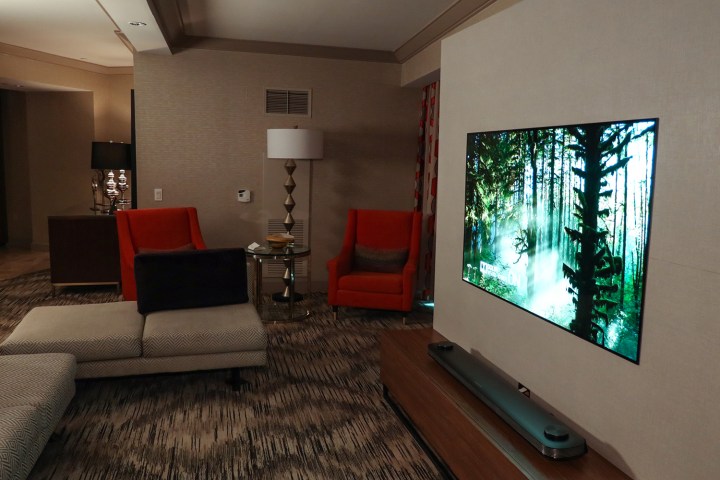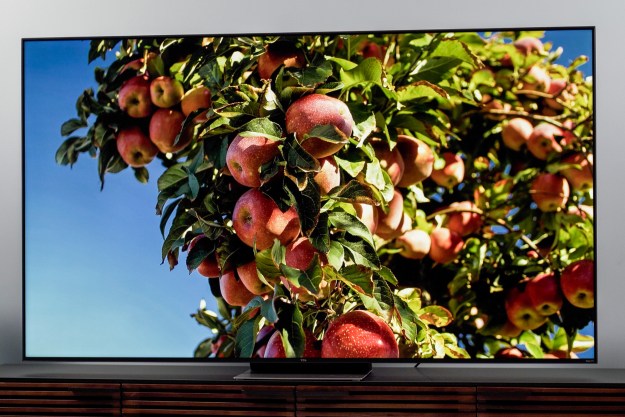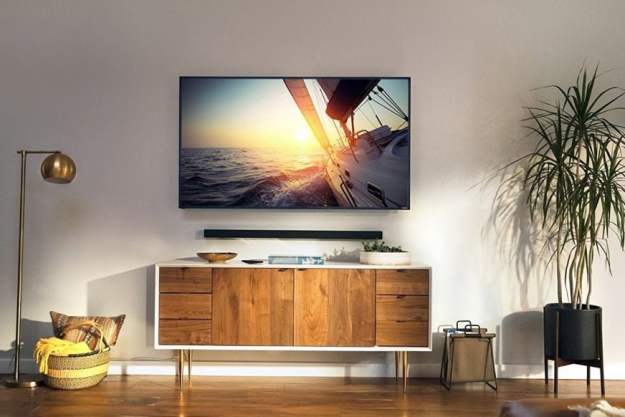These days, it’s hard not to find a 4K TV when shopping for a new set. Now the dominant standard for high-definition viewing, UHD televisions are available in a range of sizes, with a variety of features and other add-ons to enhance the experience. While 8K TVs are gaining ground (with 16K models not too far off), 4K sets are what you’ll need to maximize the performance of today’s HD components. We’re talking about things like game systems, Blu-ray players, and streaming media platforms.
Whether you’re buying your first 4K TV or simply want a refresher on the tech, we’ve got you covered with this detailed breakdown of TV’s most sought-after pixel count.
What is 4K Ultra HD?
In a nutshell, 4K Ultra HD is the name assigned to a screen with a resolution that’s four times that of a Full HD (1080p) TV. That translates to 8 million pixels being crammed into the same space in which a Full HD TV fits just 2 million — achieved by making each pixel four times smaller. The result for the average viewer? A clearer image, more accurate color, and with most new TV sets, High Dynamic Range, or HDR (more on that in a bit).
Since each pixel is smaller, and thus each one is assigned a small slice of a bigger picture, it doesn’t make a whole lot of sense to beef up the resolution on smaller screens — the extra pixels have a bigger impact on a large screen because you can fit more of them in. As such, you’ll be hard-pressed to find too many 4K TVs with a screen smaller than 40 inches.
Is there a difference between 4K and UHD?
At the consumer level, no. The two terms are practically interchangeable. But talk to professionals in the video production or cinema industry and they’ll chew your ear off about how what we lowly consumers call 4K isn’t actually 4K at all. Technically, they’re right.
In the professional world, 4K is a digital cinema standard that calls for a 4096 x 2160-pixel resolution. That first number is a horizontal measurement, the latter vertical, and they work out because they fit a 1.85:1 aspect ratio. Looking at those numbers, it makes sense to use the term 4K, because the horizontal measurement is in the four thousand neighborhood and is double the prior 2K (2048 x 1080) standard.

Still with us? Good, because now we’re going to come back to consumer television land, where the vast majority of us live. Here, we watch televisions with a 16:9 or 1.78:1 aspect ratio. That’s not quite as wide as what the pros use, so the pixel resolution we get ends up being 3840 x 2160 — double both the horizontal and vertical measurements of Full HD (1920 x 1080). Do that math and that’s four times the pixel resolution.
In 2013, the Consumer Electronics Association — now referred to as the Consumer Technology Association (CTA) — decided that, to end confusion and make marketing easier, Ultra HD should be the official name for the new resolution standard. Unfortunately, people have been calling it 4K for so long the name didn’t really stick, thus manufacturers turned to branding their latest models as 4K Ultra HD, or just 4K.
Do I need a 4K Ultra HD TV?
One might as well ask: Do I need a Porterhouse steak? No, of course not! You can do just fine with a sirloin, can’t you? Likewise, your 1080p HD TV will still work years from now because 1080p digital broadcast standards aren’t going to disappear the way analog broadcasts did back in 2009, even with 4K fast becoming the industry standard. Still, you might be tempted to upgrade once you sit in front of a 4K Ultra HD set.
In short: If you’re happy with your TV, there is no need to upgrade, but if you’re shopping for a new television, you’d be foolish not to take the leap to 4K Ultra HD. It’s not like the price will be standing in your way, either. There is a myriad of budget 4K TVs on the market, with pricing starting at around $300 for a modest 50-inch model, $400 for a 55-inch, and $500-600 for a mammoth 65-inch. Not bad, right?
What brands make the best 4K Ultra HD TVs?
There’s no shortage of 4K TVs on the market, with just about every manufacturer churning them out. That’s not to say they’re all worth your hard-earned cash, though. If you have a considerable budget, you’re best off sticking to higher-end models from bigger TV brands like LG, Samsung, and Sony, while those with less dough to burn hoping to get the largest screen for the lowest possible price ought to turn their attention to TCL, Hisense, and Vizio, brands that are producing stunning 4K panels that are starting to rival the big players.
In terms of which is the best, that’s relative to your price point and what you’re hoping to get out of the television. If it’s a simple interface you’re after, with oodles of streaming features baked in, you can’t go wrong with a TCL Roku 4K TV. For the best possible visuals, you’re going to want to go with an LG, Samsung, or Sony — more specifically a QLED or an OLED. And for a lot of screen real estate and performance on a budget, it’s Vizio.
High Dynamic Range — referred to as HDR — in TVs includes multiple formats that provide brighter whites and darker blacks, making for increased color volume and shading and better contrast than standard displays, ultimately resulting in more vivid detail. Many people (including us) say that when it’s done right, HDR is a more noticeable upgrade than 4K resolution, and if you’re looking for a new reason to buy a TV, this is a great one.
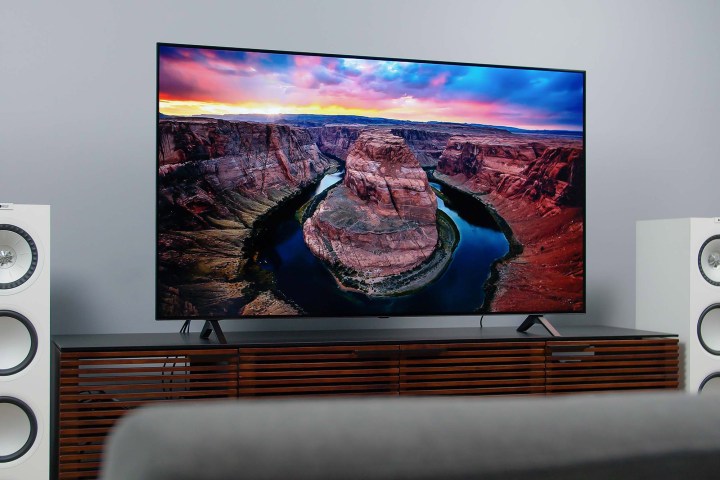
Nowadays, it’s rare to find a 4K TV that doesn’t have HDR on board — though it’s still worth checking to make sure the one you’re looking at does, especially if you’re aiming at the lower end of the market. With that in mind, there are a few different varieties of HDR, including Dolby Vision, Hybrid Log-Gamma (HLG), which is a broadcast-focused take that’s starting to reach the mainstream, HDR10, and its more dynamic counterpart, HDR10+. HDR10 is the most common variety, while Dolby Vision and HDR10+ will usually be found on more premium models, with some brands choosing one over the other. HLG may be important someday, but in the US, it’s less of a factor at present.
Can 4K Ultra HD TVs play Full HD (1080p) content?
Yes, 4K Ultra HD TVs can play Full HD content, but it won’t be displayed in the standard 1920 x 1080 resolution we’ve all come to know and love. Instead, to fill the extra pixels that make up a 4K Ultra HD screen, the content first has to be upscaled. The same applies to content shot or rendered in SD resolution.
To be clear, that doesn’t mean you have to wait for HD shows to morph into a higher resolution before you can start watching. The upscaling takes place in real-time as the material is playing. Take note, however, that while most of the big-name manufacturers’ 4K Ultra HD TVs do a solid job with upscaling, some budget brands do not, so we’d suggest sticking to the aforementioned brands for the best results.
That said, if you’ve already pulled the trigger on a 4K TV with less-than-perfect upscaling, you have some options: You can either outsource it to a mid-to-high-end A/V receiver with built-in 4K upscaling or if you’re playing a DVD, you can invest in a 4K Ultra HD Blu-ray player (or even an Ultra HD Blu-ray compatible Playstation 5 or Xbox Series X) as most of them have an upscaling processor of their own under the hood.
Where can I watch 4K Ultra HD content?
There are a growing number of on-demand streaming options available, including Amazon Prime Video and Netflix, and even Hulu has rejoined the party (to a lesser extent). If you’re more of a physical media type of person (and enjoy the added performance quality they offer), the launch of Ultra HD Blu-ray in 2016 opened up a slew of additional choices — a sizeable chunk of which can be rented through Netflix DVDs (yes, that’s still a thing) or purchased on Amazon. There are also multiple download services that offer 4K resolution content, including iTunes, Google Play, and others.
And finally, there will likely be a host of new streaming services coming soon which will host 4K content. Disney added a significant chunk of its own to Disney+, which has hundreds of hours of movies and shows ready to fill all those pixels.
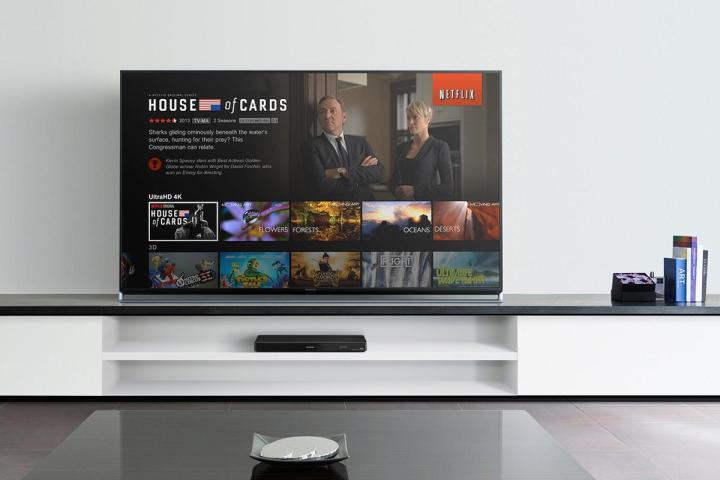
When it comes to live TV, you aren’t going to find 4K packages from many cable or satellite companies just yet, but Dish Network, DirecTV, and Comcast have all started dabbling into the space, but it’s still very limited and mostly relegated to prerecorded or streamed content. For the time being, 4K is mostly rolled out for special events like the Olympics or other sporting events.
As for over-the-air broadcast television, Ultra HD isn’t yet available, though ATSC 3.0, the next-generation broadcast standard, is coming, and it will permanently pave the way for 4K broadcasts.
Should I buy a 4K TV or wait for 8K?
While 4K Ultra HD may seem like the next big thing, there’s already a new kid on the block. It’s called 8K, and with a resolution of 7680 x 4320 (or 4320p), it’s four times that of 4K Ultra HD and 16-times that of Full HD. That may seem all too appealing, but there are a couple of reasons you’re going to want to steer clear of them for the time being — with the first being 8K TVs are incredibly expensive.
Even if your pockets are deep, we still advise against bagging one right now. 4K Ultra HD has just about become the new industry standard, and there’s a lot of work to be done before 8K replaces it — even if it seems like development has come in leaps and bounds. TV technology is likely to mature greatly between now and then, which could ultimately render current models obsolete.
To make matters worse, the industry is already beginning to talk about 16K, which you shouldn’t even be considering if you’re not a member of the 1%. Even then, there’s no real 16K content right now, save for some pseudoscience that allows manufacturers like Sony to show off its fidelity as best it can. The same rings true for 8K, so you’d only be bleeding your wallet for the privilege of technological clout. Your only real reason to spring for something in this category at present is if you have massive display needs, as the latest TV tech supports sets much larger than current mainstream 4K models are capable of.
Your best bet is to pour your budget into the best QLED or OLED TV (depending on your preference) you can find. It will serve you better in the long run and you won’t run the risk of owning an 8K TV that could become antiquated before 8K even hits the mainstream. Right now, 4K Ultra HD is the only resolution worthy of your investment, and that won’t be changing any time soon.
Editors' Recommendations
- What is Dolby Vision? The dynamic HDR format fully explained
- How to know if you’re actually getting Dolby Atmos sound
- The best TVs of 2023: our favorites from Samsung, LG, Sony, and more
- Samsung’s 2023 Neo QLED TVs start at $1,200 — and you can buy them this week
- The best 4K Blu-ray players for 2023


